
There is something magical for me, about train rides whether slow steam hauled locals or super high speed expresses that criss cross parts of Asia and Europe. Today’s seven train ride on three separate railway lines managed to combine slow and fast trains, scenery and amazing food into a beautiful day trip on the Jiji Railway.
Verdict:
- My Overall Rating: 81%
- Why it should be visited: Nice scenery, a glimpse of “real” Taiwan, friendly people, easy to find great foos
- Negatives: Lack of coordination of train and bus timetables
- Would I return?: Yes
Location and Orientation
The Jiji Line (in Manadari 集集線), is a branch line of the Taiwan Railways located in the Changhua and Nantou Counties. It’s terminus is almost at the geographical centre of Taiwan.
Built by the Japanese government to bring materials and people power to build the Mingtan Hydroelectric Plant in 1922, the line was used to transport timber and then it was reinvented as a tourist railway. Locals use the line but they are outnumbered by people who come from all over Taiwan. There were a few non Taiwanese. I encountered one bus load of mainland Chinese tourists (who did not actually ride the train) and several hundred Taiwanese school students.
It was severely damaged in the Jiji Earthquake and had to be closed twice to repair damages. The Earthquake’s impact can be seen in a few places (see below).
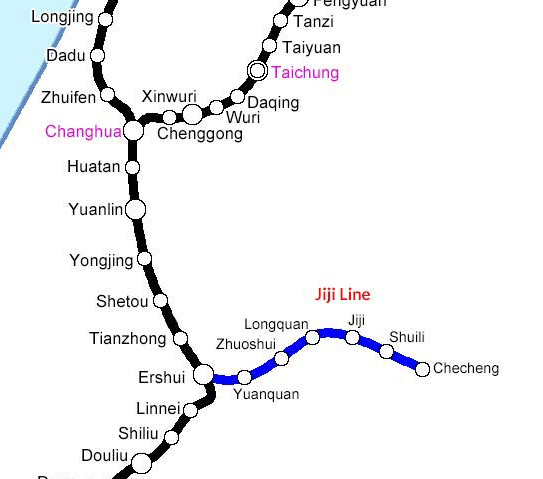
The length of the line is 29.7km. There are seven stations (with their Chinese characters):
- Ershui 二水 which is a connection to the main West Coast railway line of Taiwan. It is a busy town of about 15000 people.
- Yuanquan 源泉, a very quiet place -apparently only 55 people board the train here every day
- Zhuoshui 濁水
- Longquan 龍泉
- Jiji Jiji 集集 – which the line is named after. Centre of the 1999 earthquake and where you will find the famous Green Tunnel
- Shuili 水里- a town that sits next to the Zhuoshui River, Taiwan’s longest river
- Checheng 車埕 a pretty town nicknamed “secret garden” . It is where the Dam is
The jiji line has only one track with a couple of passing points so trains services have to operate around that bottle neck. The result is that there are just 12 services each way. NB not all go to the end of the line.
I took the second service of the day to Checheng (at the end of the line) and rode back stopping along the way. If you have noted the timetable down, ts easy to do.
Getting there and getting Around
There are tours to the railway which could be a fun way to do it. It depends on how much you want to see. I am a Do It Yourself traveler.
Train is the easiest way to get there. Hop on the West Coast Line which runs the whole length of the Western side (surprise surprise) of the island. This line starts in the North at Keelung, runs through Taipei and ends up way south in Kaohsiung). Riding right around the island by train is a definite thumbs up from every tourist I know who has done it. I plan to travel the East side of Taiwan on my next visit.
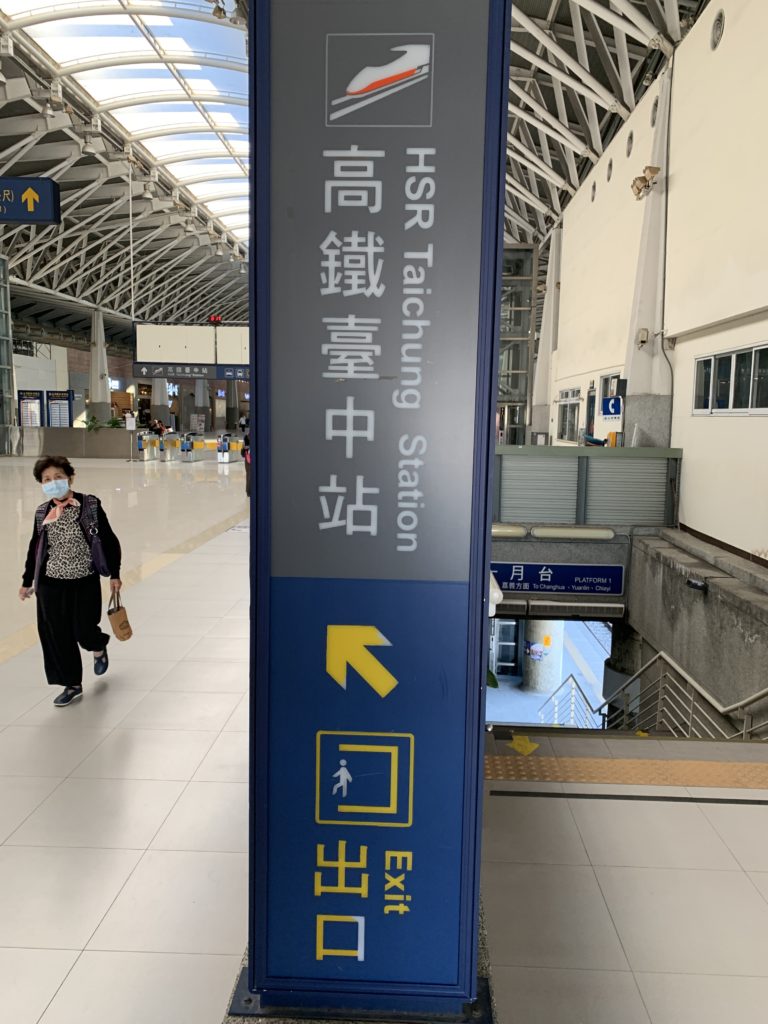 For my day trip, this option was too slow for me, so I sped things up by riding the Taiwanese High Speed Rail from Taipei and switching to the West Coast line. Passengers heading to or from Taipei can switch lines at Taichung HSR station. This station is connected to Xinwuri normal Taiwans train station. That station is shown on the map above. (It is very confusing for passengers when networks have different names for essentially the same station).
For my day trip, this option was too slow for me, so I sped things up by riding the Taiwanese High Speed Rail from Taipei and switching to the West Coast line. Passengers heading to or from Taipei can switch lines at Taichung HSR station. This station is connected to Xinwuri normal Taiwans train station. That station is shown on the map above. (It is very confusing for passengers when networks have different names for essentially the same station).
I would leave a ten minutes for connecting at the station. It is very well equipped with shops, restaurants, coffee chains and sparkling clean toilets.
Ticketing and timetable systems for the Taiwan High Speed Rail the Taiwan Railways West Coast line and the Jiji railway were all separate. I found some aspects very irritating. For example, the ticketing systems assume a lot of local knowledge as to which province a station is in. Today’s destination Ershui is in Changhua province. this means a little google mapping and guesswork to get it right. Once I had worked out, it was clear. Book the HSR online and collect your tickets at 7/11 or at the station. Buy the other tickets as you go at the stations.
There is a brilliant Taiwan railways app which makes things a lot clearer. A Taiwan High Speed Rail & Taiwan Railway Joint Pass for foreign residents is available which allows you to travel the normal trains for five day sand unlimited Economy travel on the HIgh Speed network for two of those days.
All of the trains were on time -to the minute, which has always been my experience in Taiwan. There are buses connecting the villages along the line. You can hire bikes near the stations and ride the excellent bike trail which was made from land that rose up out of the ground during the 1999 earthquake.
The Jiji Trains
Each train on the Jiji line is decorated with its own unique character set. This will keep the kids amused if nothing else -and parents too. Lots of adults posed in front of the visuals.

On the Zoo themed train

Spot the detail in these decorations!
Exploring along the route
If you have time, each of the stations has historical and natural places to explore. I went straight the Terminus (Chechen) and worked my way back.
Checheng is a “rustic” tiny village next to the Mingtan Reservoir which is dependent on tourism, the power company and wineries. Once it was a centre for timber and logging.
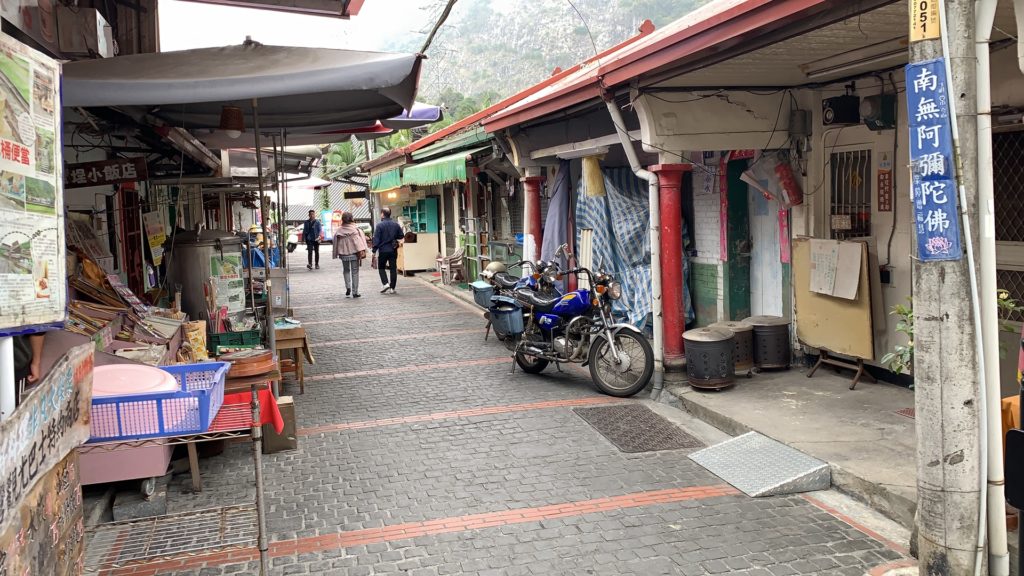
Village ViewWalk up the hill and look at The Dam.
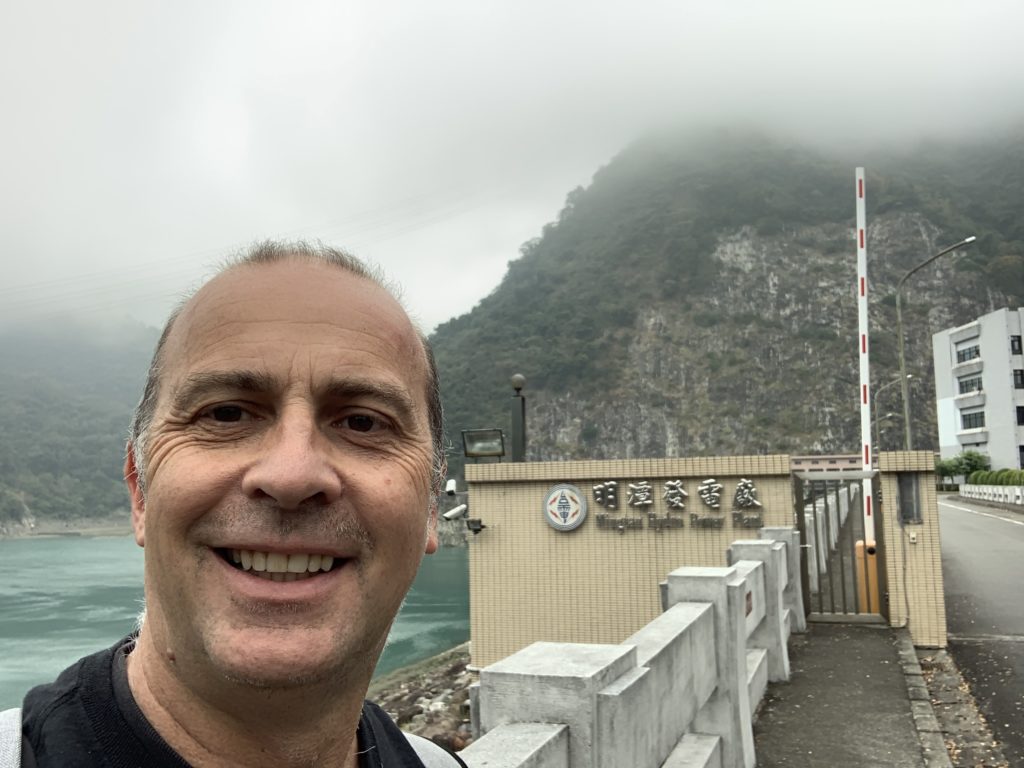
Lake View
As well as helping you stay ft, you will be rewarded with great views of the village and station. An 80 year old woman made her way up and down while I was there!

Village View
The old sawmill in the town is now the Checheng Wood Museum. It did not take me long to go through but is quite interesting place to see how they did things 50 years ago. It is free. THere is a nice cafe upstairs and a comprehensive gift shop.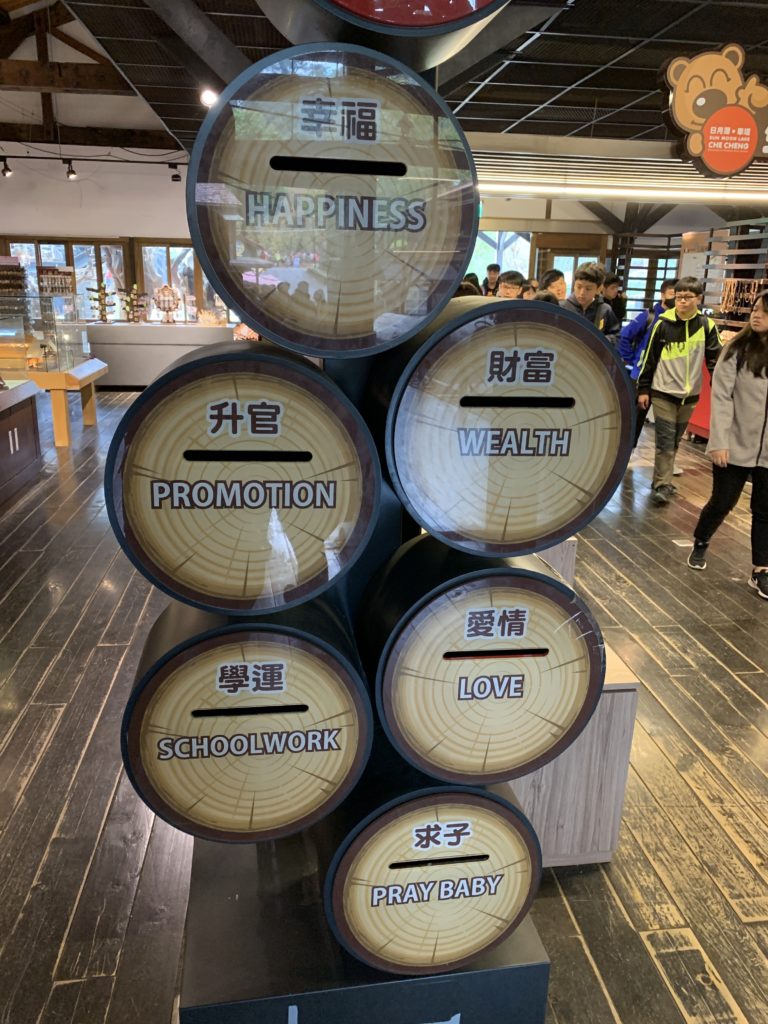
The original logging pond is now a peaceful centerpiece inhabited by large fish
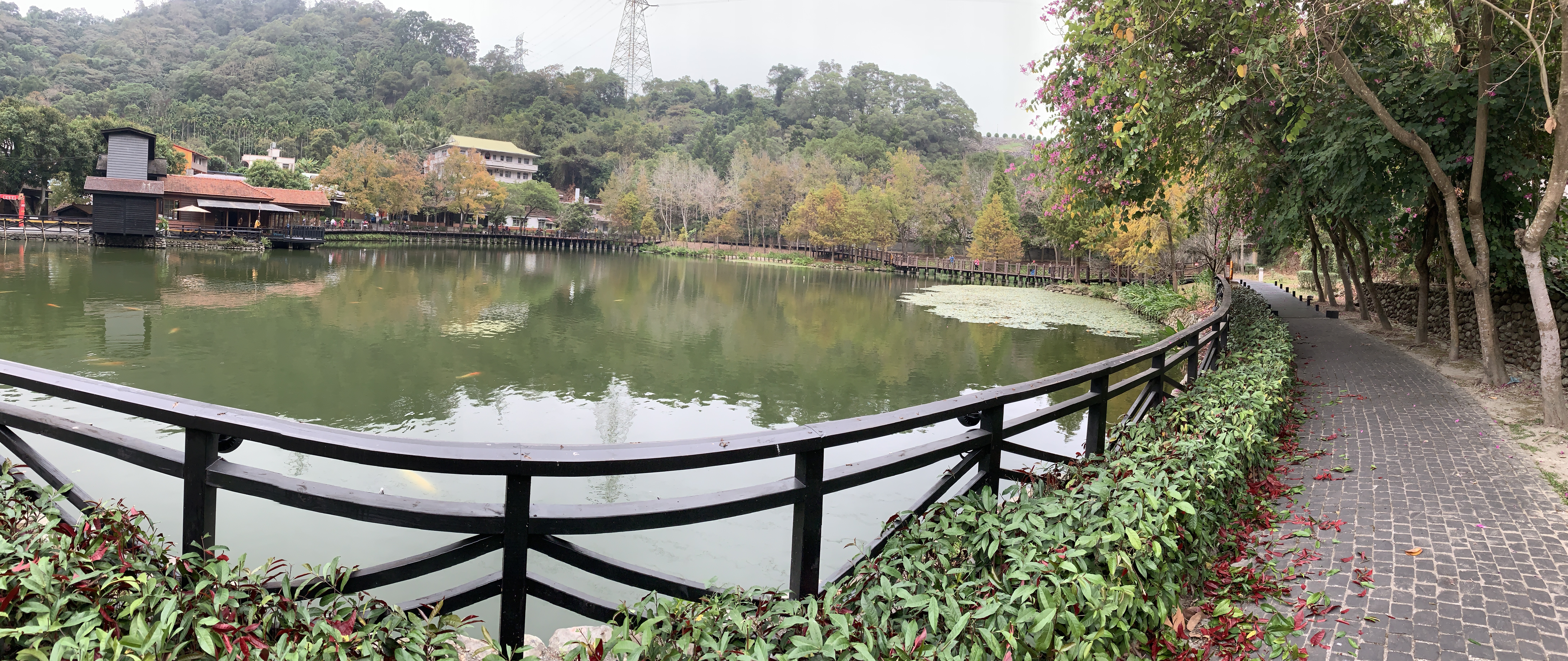
Around Checheng station are old train cars from the original line
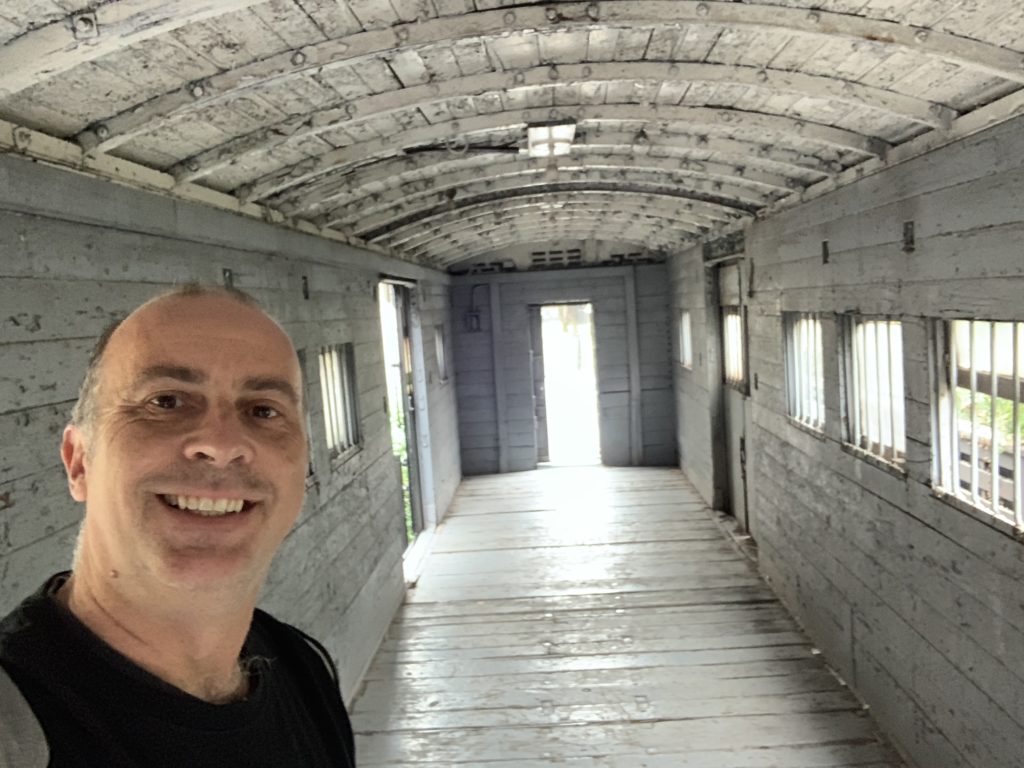
On the way back to the station I walked through the Shuili Farmers‘ Association Shed where you can sample all sorts of preserved fruits and a Checheng plum-wine. Not recommended if you are driving a train!
Then it was all aboard the train for the seven minute, 2.5 km (1.5 miles) ride to the next village.
Shuili station is quite impressive actually. It was at the central point for timber, shipments and. There is a large level space where 100+ log carts might be parked. The most famous and very touristy sight there are the Snake Kilns. Thee long kilns are shaped liek a snake. (There are no actual snakes) and you can walk through them. These kilns were fueled by timber and heated to temperatures as high as 1,200 degrees Celsius to produce a large range of pottery which went all over Taiwan and some to Japan. It is a 30 minute walk from the station, so you are best grabbing a bus, taxi or bike.
An eight kilometres 14 minute rain ride along the river brings you to JiJi township which is where I spent the most time. There is a large range of eateries so a good place to have lunch! Check out the Old Street which had some good places to eat.
The most sobering site on the line is the Wǔchāng Temple 武昌宮 In the September 21, 1999 earthquake, the temple pancaked down.
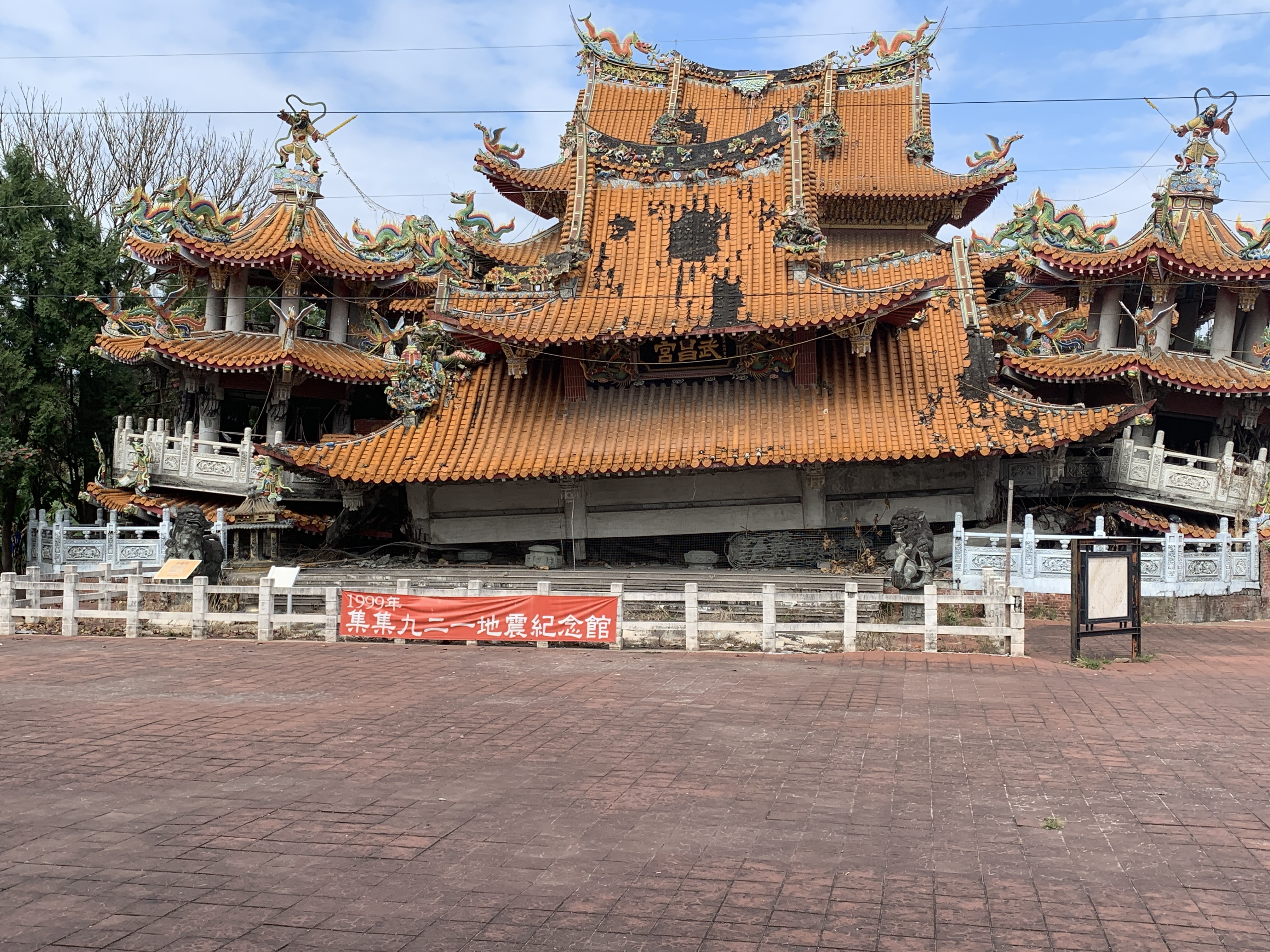
The decision was made to stabilise the remains and leave them as a reminder of the massive disaster which killed 2,416 people were killed and seriously injured 11,000.
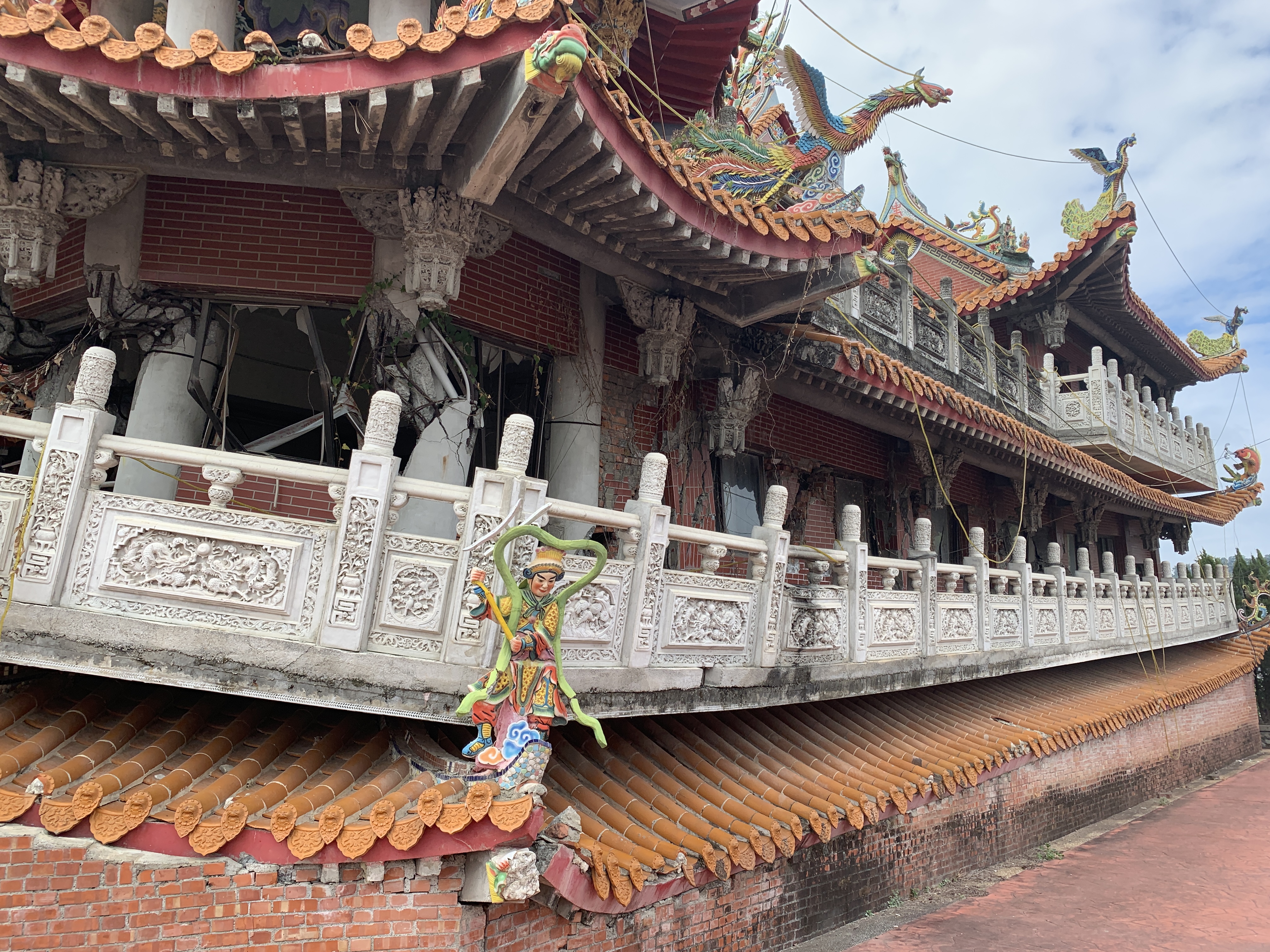
A new temple has been built next to it and there is a fascinating fresh market behind the complex. The temple is a 10 to 15 minute walk from the station. 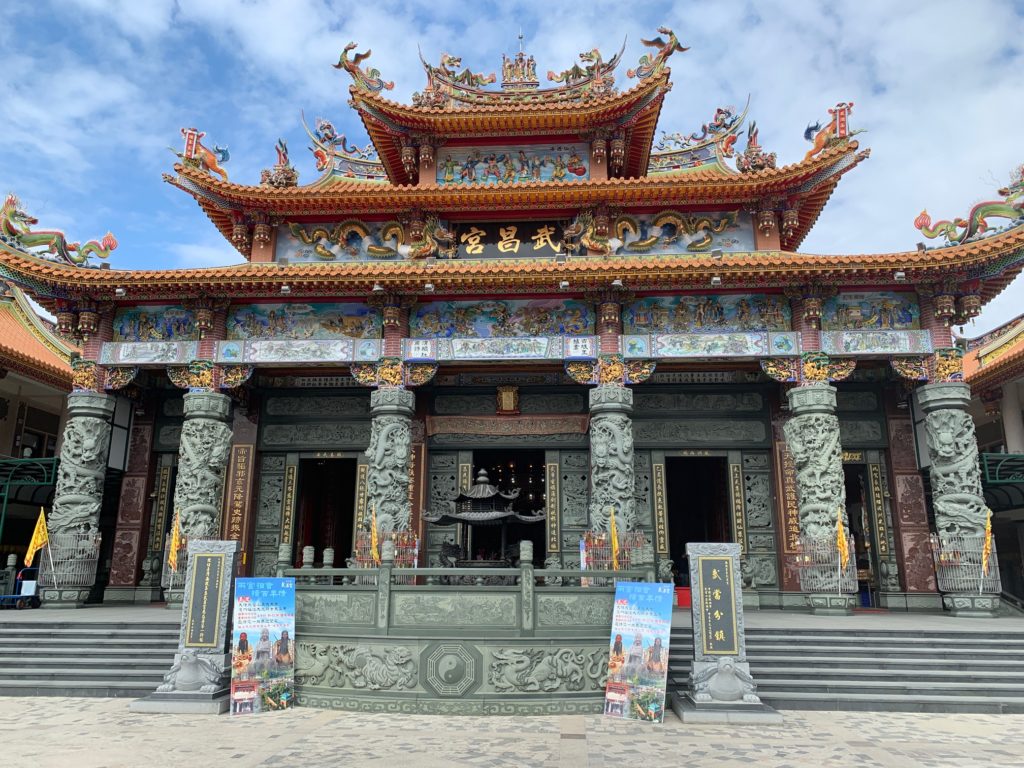
I saw other examples of the quake and everyday village life along the way.
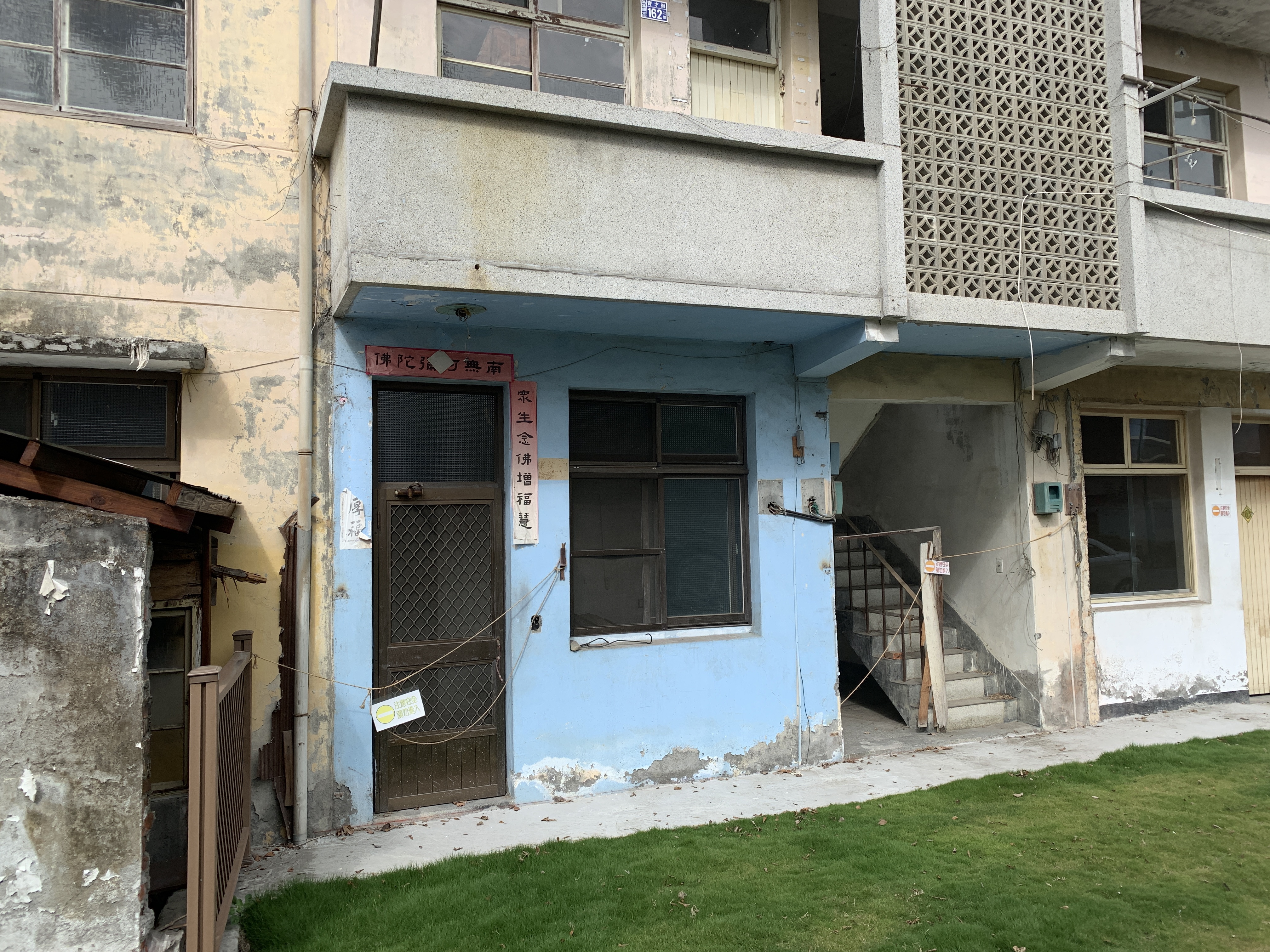
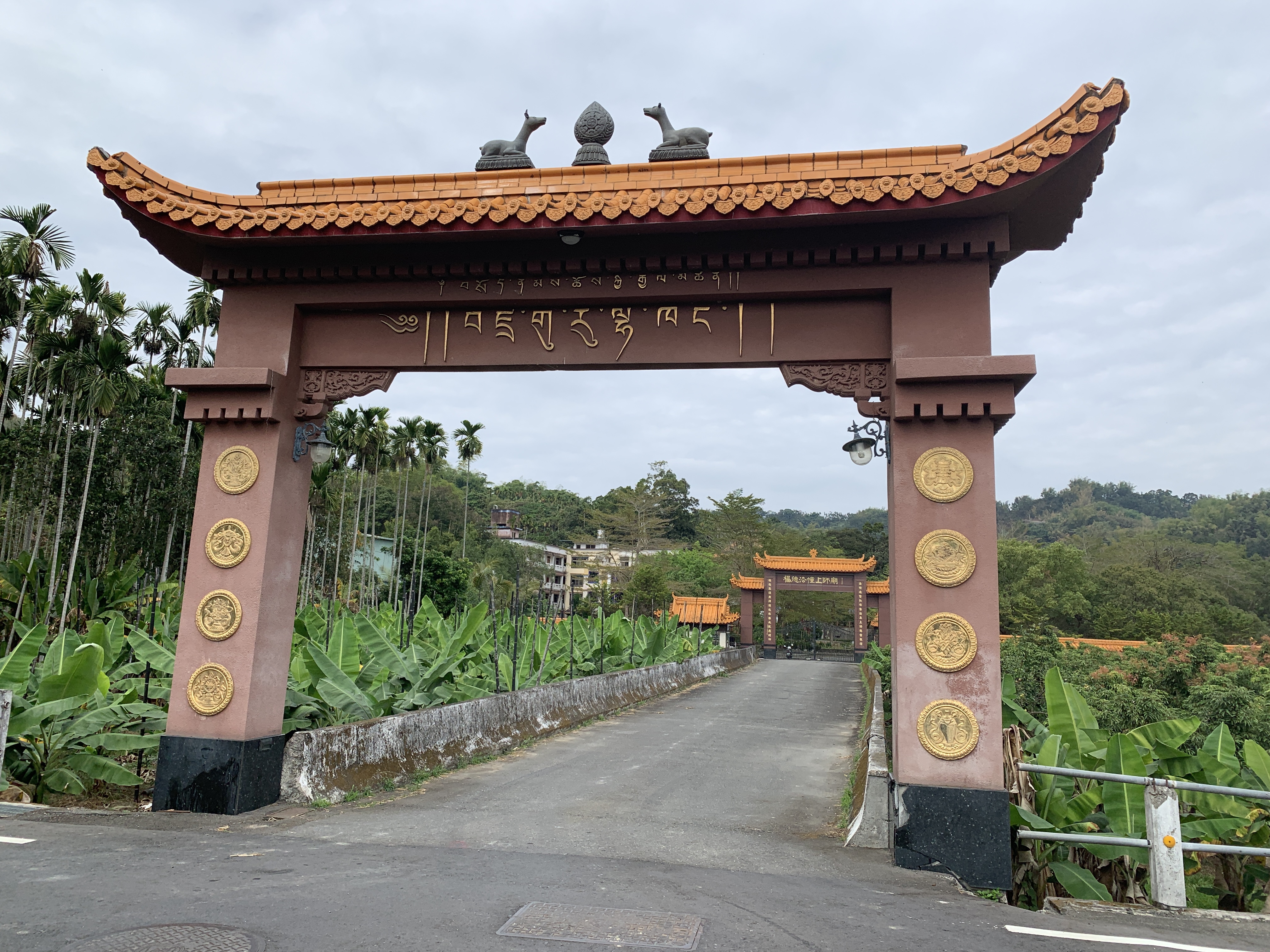
Elaborate gates near Shenxian Falls
Further on from the temple are the Shenxian Falls located in the hills behind the town. This rather pretty spot is popular for picnicking locals. The watrefalls themseoves are very seasonal and can disappear to trickle if there has not been enough rain. The station staff can advise as to the currrent waterfall situation.
One of the oddest places in Jiji was the the Jiji Military History Park, featuring decommissioned equipment from the Taiwanese Armed Forces. Don’t rush here.
Keeping up the Education theme, you can visit the the Mingxin Academy, built in 1885 as the first private school in the region. It is now a museum with a traditional library which will transport you to an earlier time. Accompanying this display are examples of traditional handicrafts. It is a very peaceful place but you won’t be lingering long there.
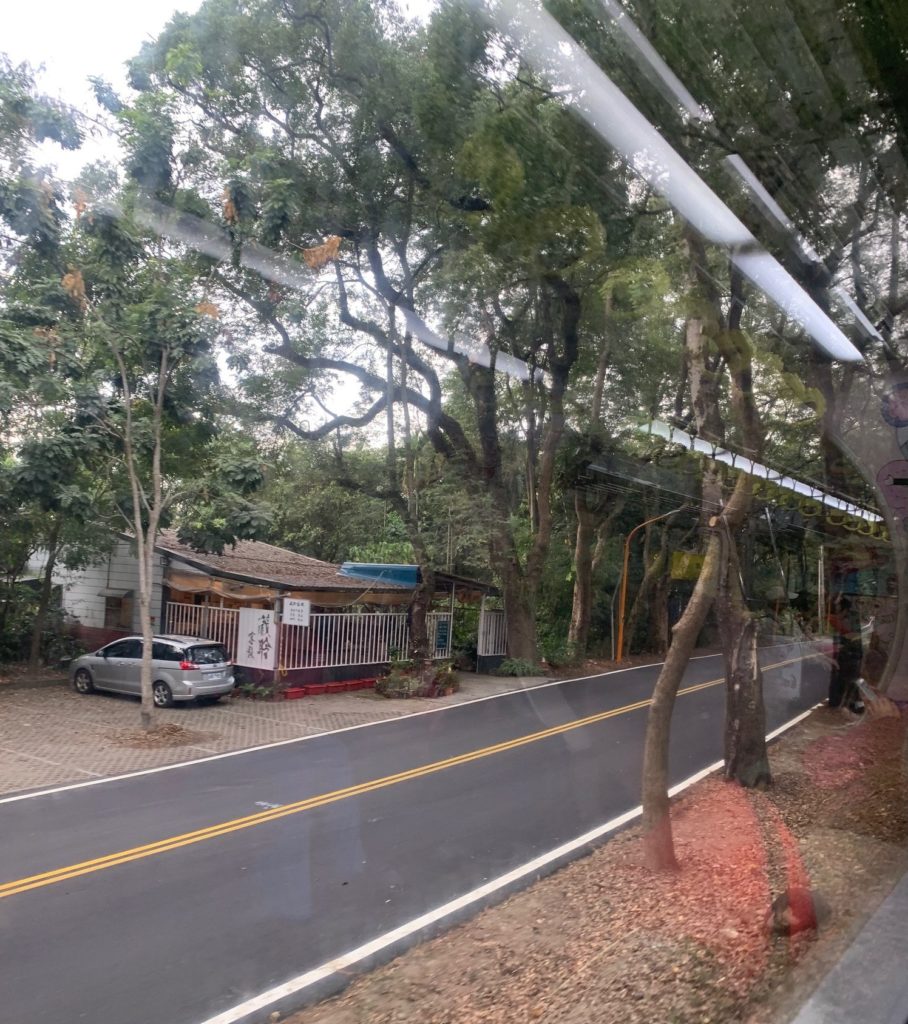
Next Stop five kilometres (three miles) away is Longquan which is home to the Green Tunnel.
You can hike back from the station to see it or ride the bus between the two towns or just enjoy the view from the train.
During the Japanese Colonial era, the Japanese authorities “invited” households to plant camphor trees along the road and water the plants everyday. Names were atached to the trees which reportedly the authorties used the inofmrtaion to punish the families who did not take care of the trees.
The trees, many of which are iver 70 years ld have grown to create a tunnel like effect. It is rather pretty.
The Zhuoshui, train station is rather elegant. Asyou leave the station, on the corner of the main road and the street leading to the station. It is a multi generation tea producer and seller. Taiwan takes its teas seriously and this is supposed to be the best!.
A 30 minute bus ride from the station is an unusual park which is part of Taiwna’s Museum of Natural Sciences. The Chelungpu Fault Preservation Park is centered around the exact fault that caused the 1999 earthquake. It is both fascinating and scary to be so close to something that was responsible for so much damage.
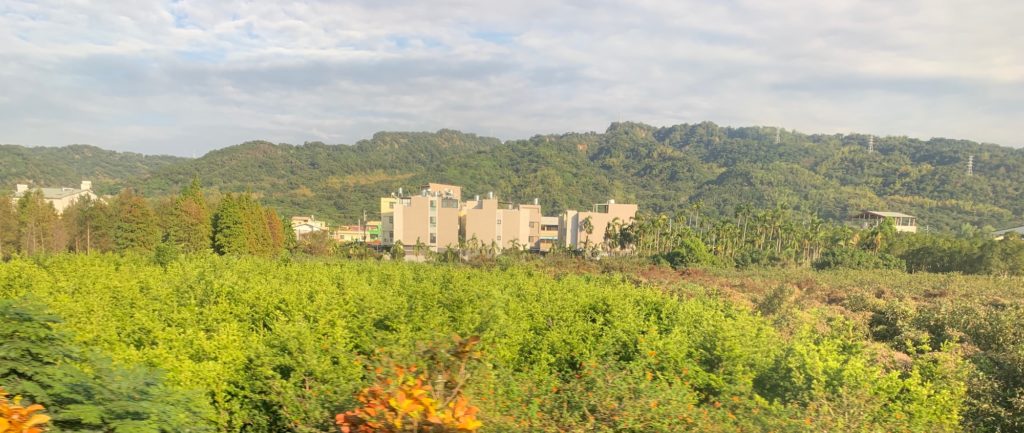
Not far from Zhuoshui
Climate and Weather
from April to November, the temperature in the day sits between 30 and 34 in the day and 26/27 at night. From November to March, top temperature is close to 26/27. Humidity sits around 65pc.
Rainfall in June and July is quite high averaging around 430mm compared to 100 in January.
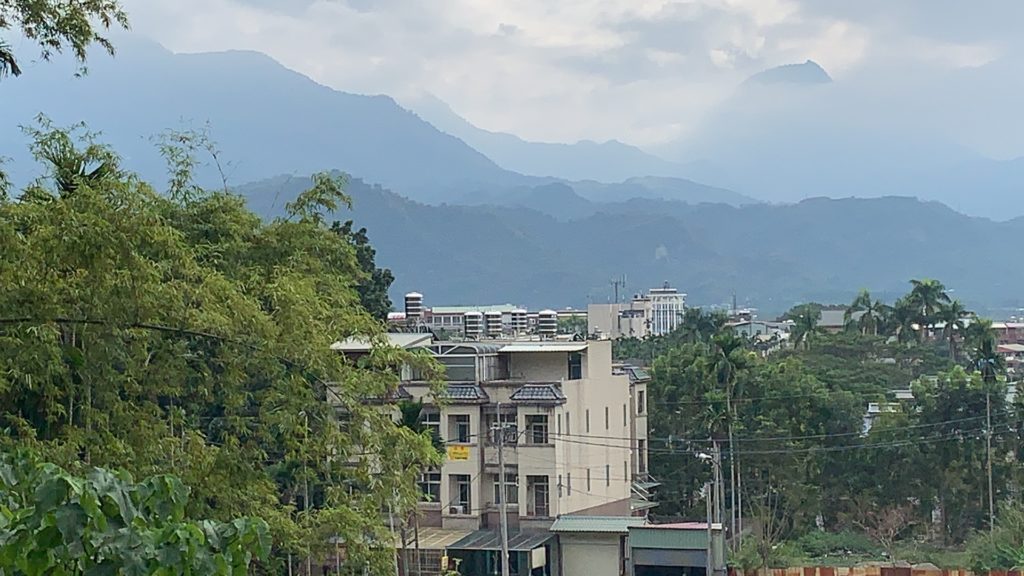
Costs
A one-way ticket fare, from beginning to end of the Jiji line is currently $NT44 ($USD1.40). It is cheaper to buy an unlimited-rides one day pass fare for $NT80 ($2.60). Tickets were available at all stations on the line or you can buy them on board (this is kind of discouraged but totally possible).
In the future, the line will support the Taipei Metro Easy card, the integrated ticketing system card. Tourists can buy this card at all stations in Taipei, at the International airport and Convenience stores. It is one of the best ticketing systems I have experienced (Sorry Tokyo, Hong Kong and London!).
The HS fare was around $US20 and west coast train ride about $US4
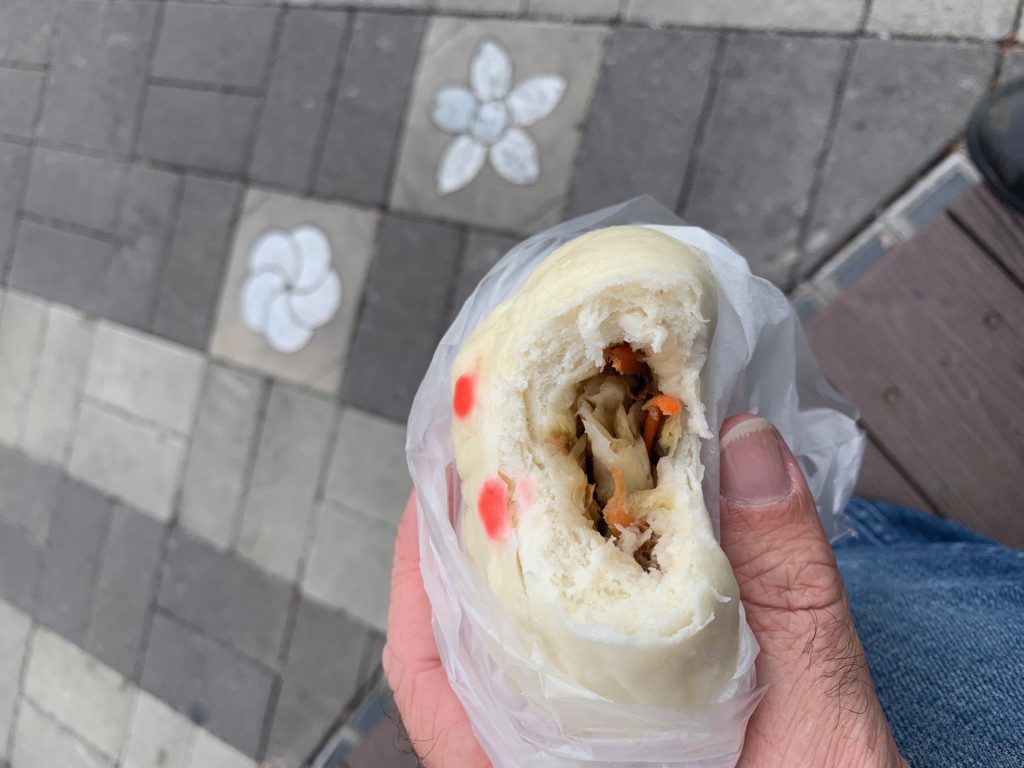
A cheap at a roadside cafe costs between $US3 and $US6Meal. A local beer will set you back $1.50 and a cofee $US2.50. A bottled soda/soft drink is around 80 US cents.
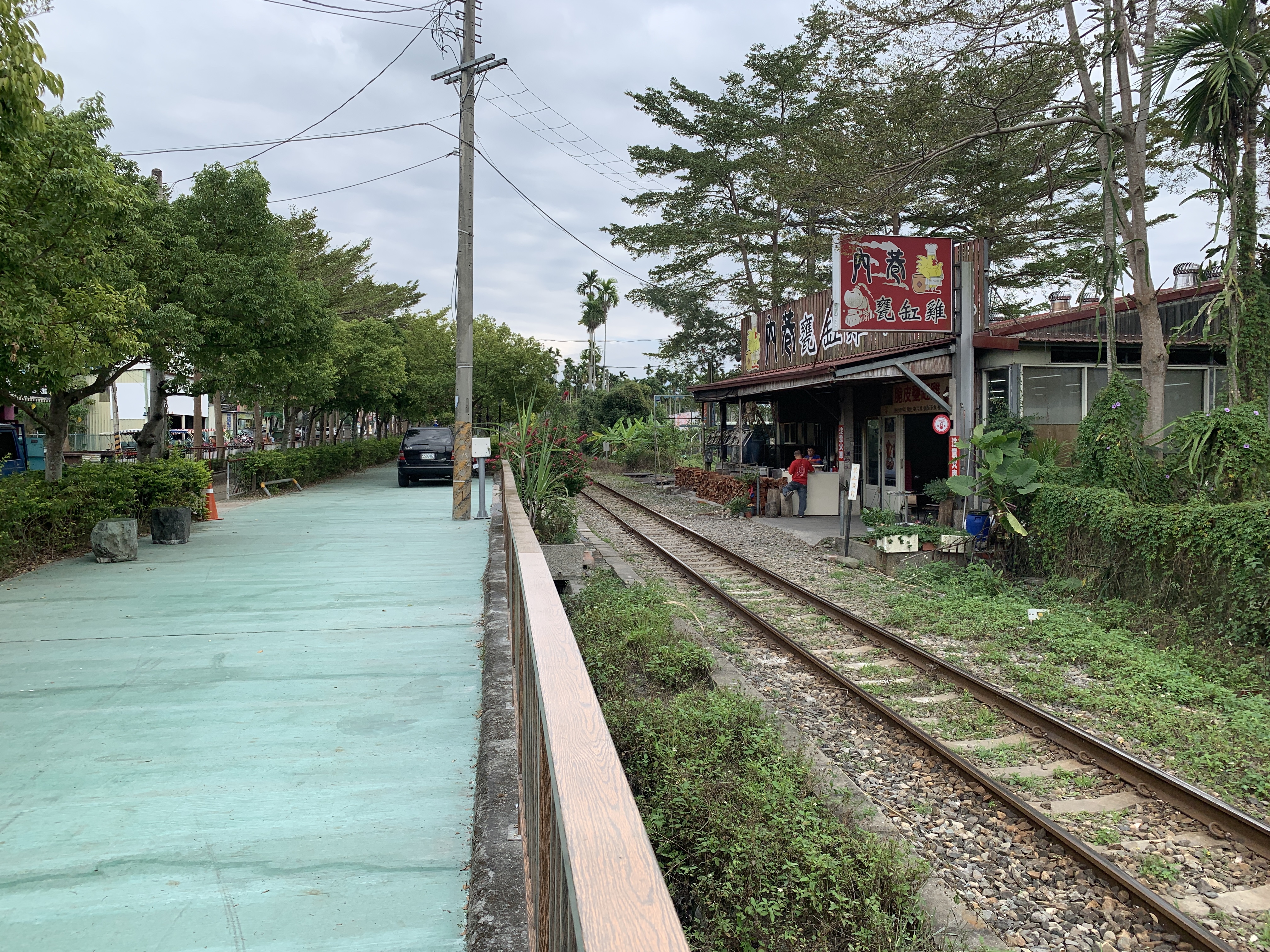
Safety
Taiwan enjoys a very low crime rate. Take the usual precautions with your possessions.
Inn case of an emergency, police can be contacted at 110, and the fire department can be contacted at 119.
The Foreign Affairs Police (FAP) maintains a 24-hour service center that is staffed by English-speaking officers. Contact information iin Taipei: (02) 2556-6007 and all other areas within Taiwan: (02) 2394-0238.
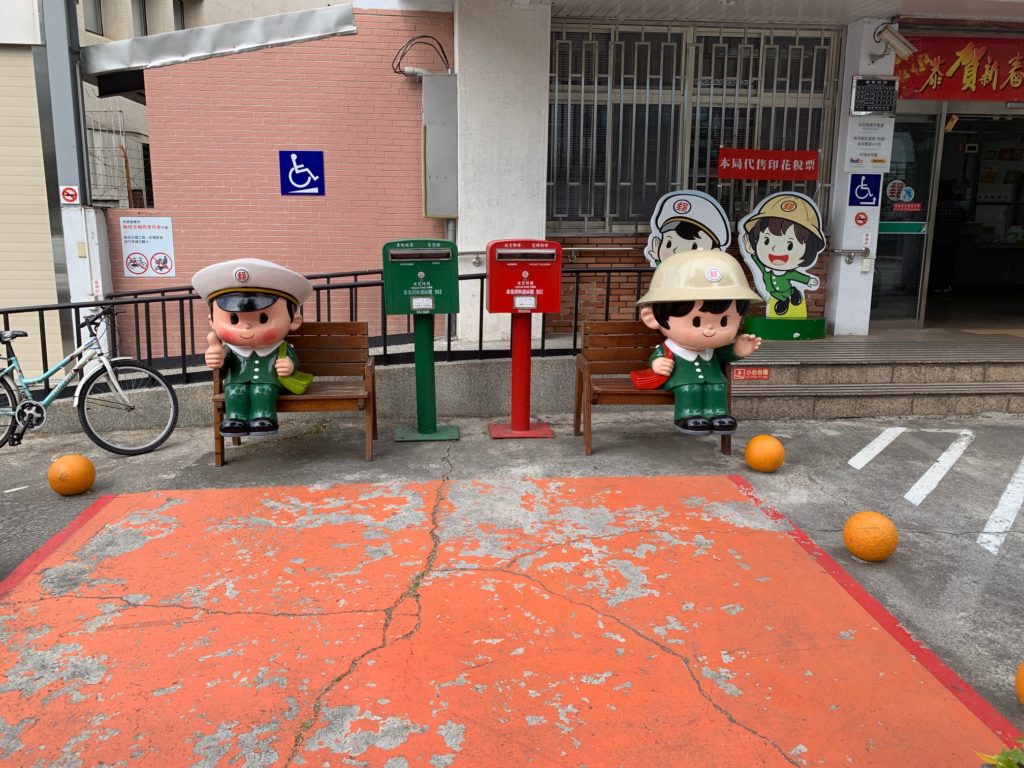
Each train station has train staff on duty and there is a roving train guard abroad every train service. Eercise care when crossing the rail tracks.
Food
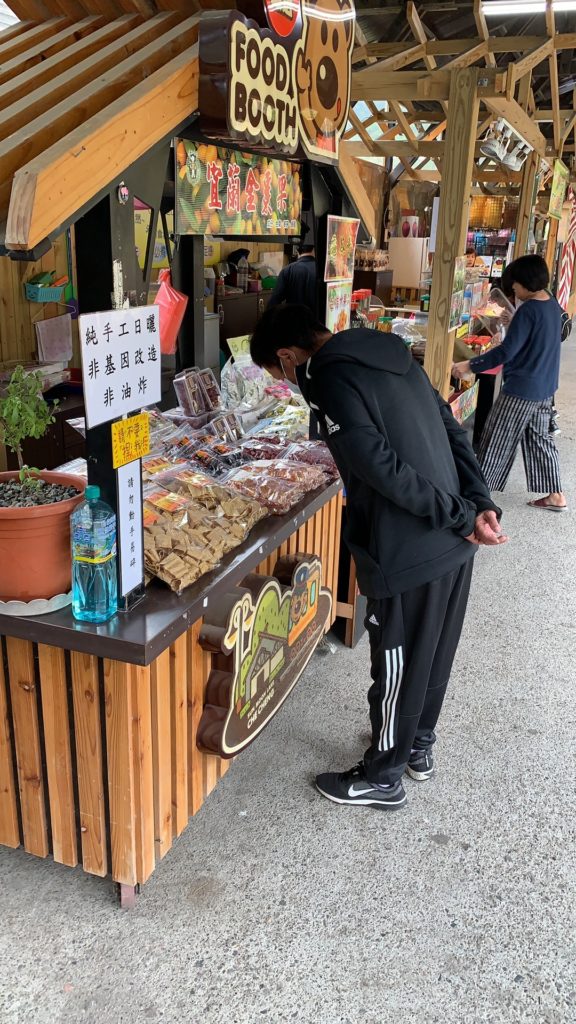
Farmer’s Produce Market
Taiwan is a food lover’s paradise and there were delicacies to try all along the railway.
The ubiquitous tea and bubble tea shops will keep your thirst sated.
Taiwanese Beef noodles, Braised pork over rice, Dan bing rolled chopped pancakes, dumplings and pineapple cakes were available in the townships.


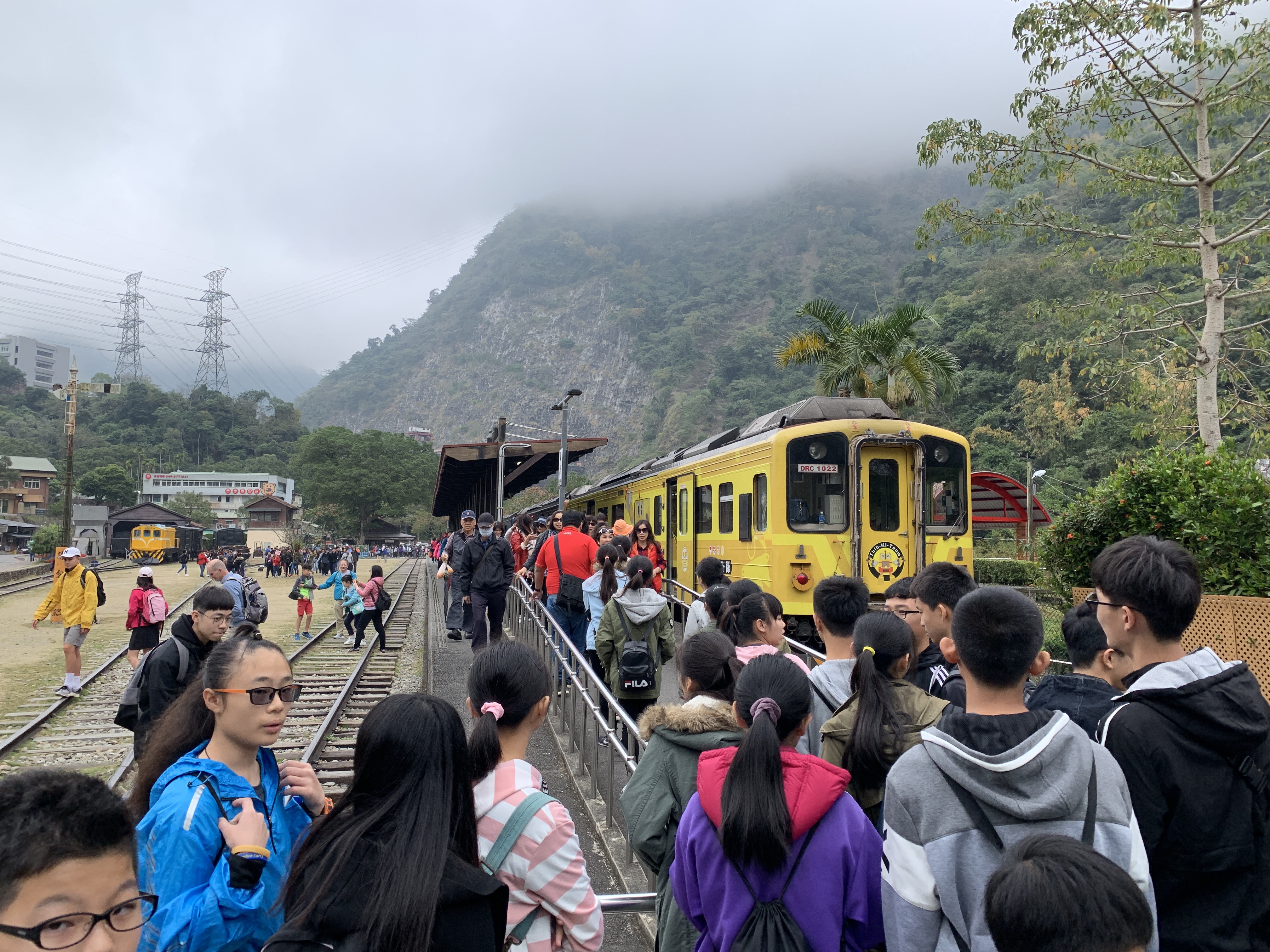
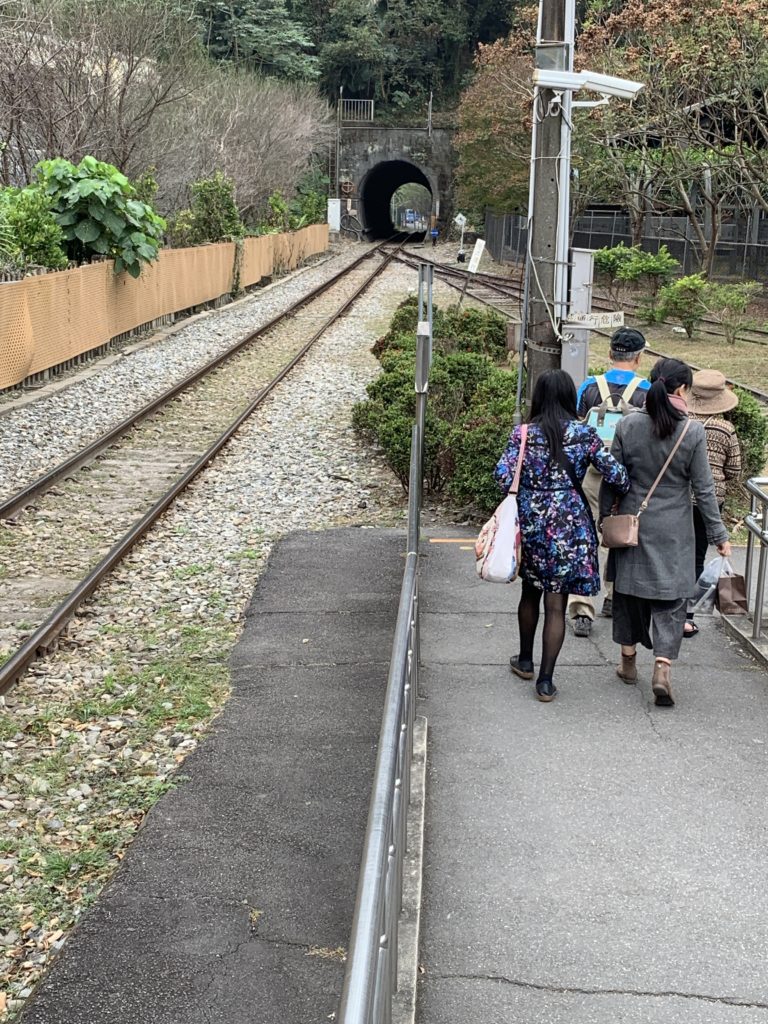
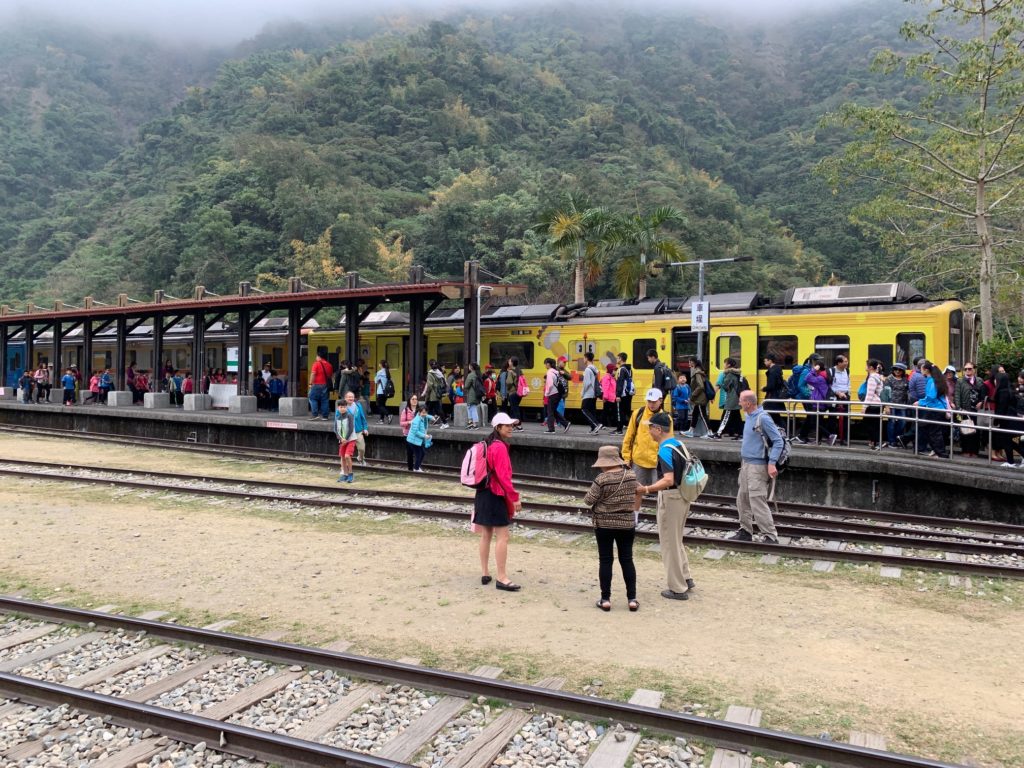
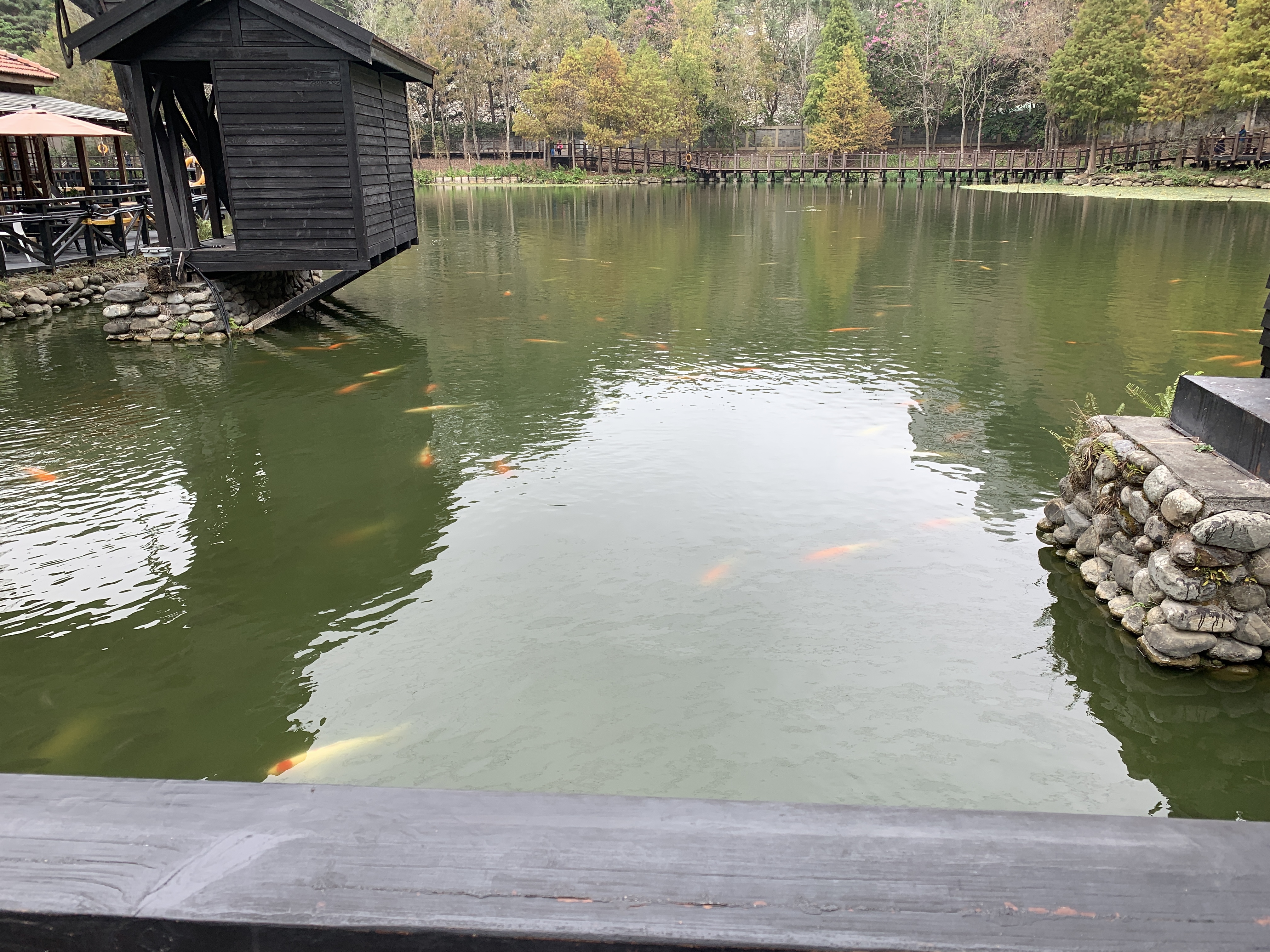
Leave a Reply